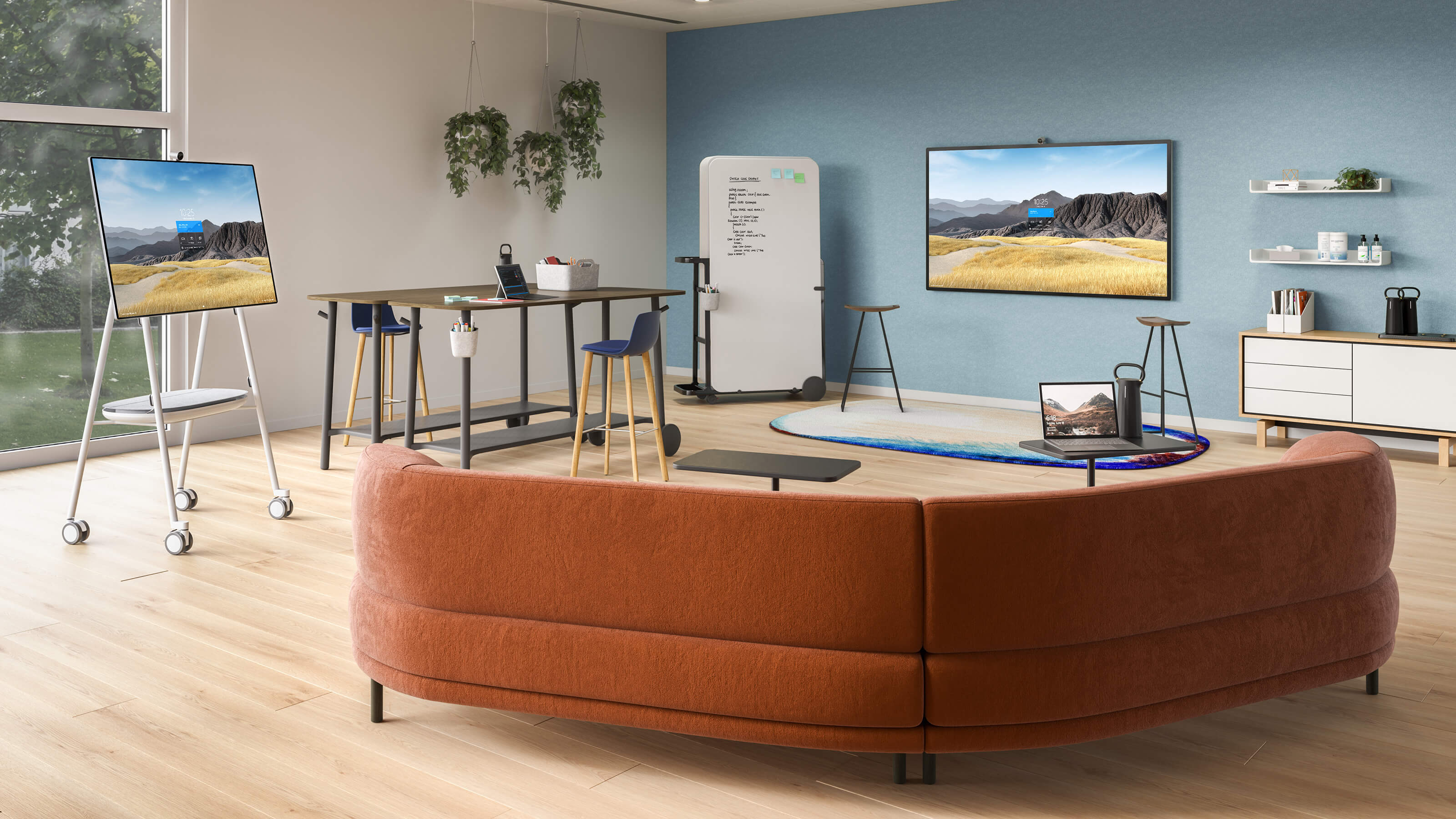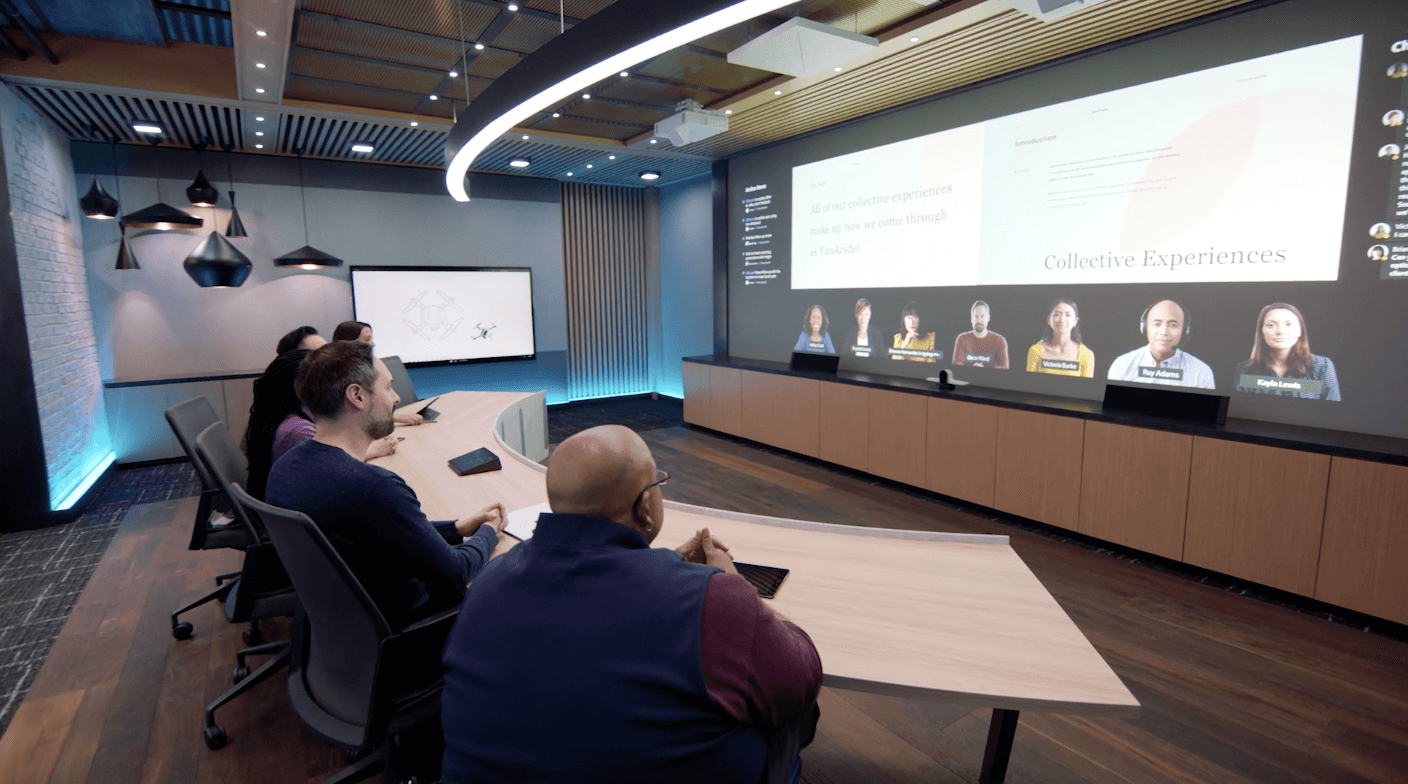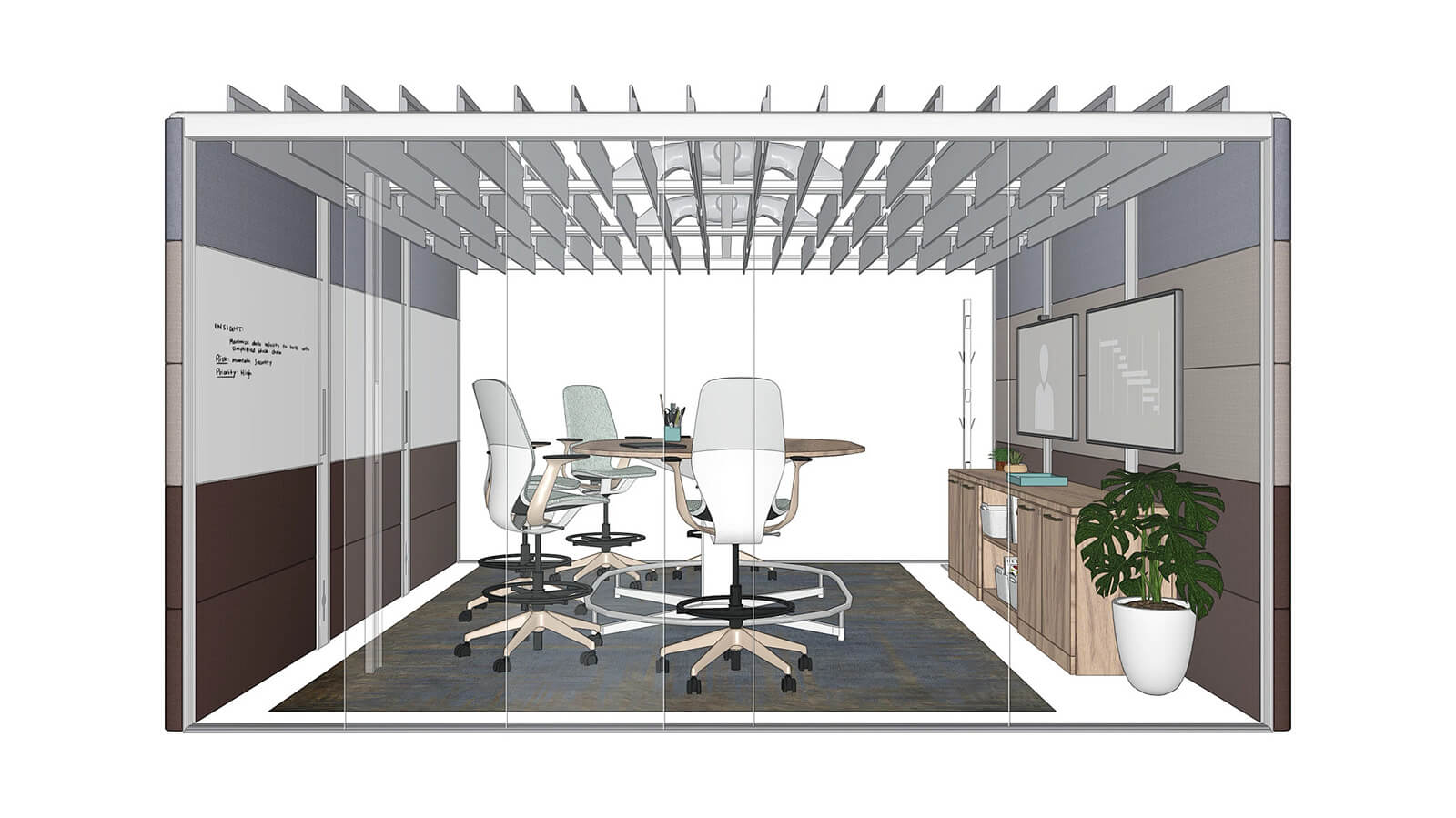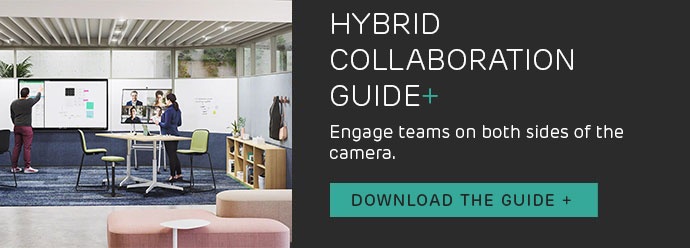As more people begin to return to the office, organisations are preparing for a significant increase in hybrid collaboration. The big question is: how can we make hybrid collaboration an enjoyable and productive experience for all involved?
Just as technology has allowed us to work remotely during the pandemic, it’s technology that will allow us to flourish in this new hybrid mode of work.
As Robin Seiler, Corporate Vice President for Microsoft Devices points out:
“Now more than ever businesses are looking for technology that helps recreate the energy and connection we feel when we’re in a room together.”
So, how can we bridge the gap between workers in the office and workers joining from home or a third space? What technologies out there are helping to improve the hybrid collaboration experience for everyone?
Tech considerations for hybrid collaboration
“For a better hybrid collaboration experience, think like a director — lights, camera…audio, content.”
Steelcase research pinpoints the hardware and software features to consider when designing for hybrid collaboration:
Visuals - “See and be seen”
- Cameras - To keep people engaged, make sure they can see and be seen, whether they are in the office or remote. This means choosing the right camera or cameras for the type of collaboration being supported. For example, auto-tracking is a great feature for a presentation by a single speaker (the camera can follow them as they engage the audience), while auto-framing is most useful when people are moving around the room (the camera widens or minimizes the field of view based on the number of people in the space).
- Display - Consider how teams will be collaborating when selecting the right display, Creative, generative sessions will benefit from more interactive tools.
- Lighting - Task, ambient and accent lighting are different from lighting used to design a great video experience. For example, try to reduce strong backlighting from windows or lamps using shades, screens or other dividers.
.jpg?width=3000&name=21-0162124%20(1).jpg)
Audio - “Hear and be heard”
- Acoustics - Furniture and materials all impact acoustics. Consider where acoustic-absorbing properties can be added. For example, adding soft finishes to furniture will help dampen sound.
- Microphone - Power, placement and pickup of sound are all key elements to consider when choosing the right microphone for a space.
- Speaker - The right speakers can amplify and spotlight sound, and integrate with other technology in the space to avoid echos and reverb.
Content - “Engage more people in more places”
- Digital & Analog - Provide a mix of digital and analog tools to keep people engaged on both sides of the camera, and consider how to display content. For example, content cameras, dedicated to capture analog content on markerboards or sticky notes, provide a significant benefit to generative collaboration, while digital whiteboards enable co-creation between hybrid teams.
The tech that’s bringing people together
1. Microsoft Surface Hub & Steelcase Roam collection
“Since 2017, Microsoft and Steelcase have teamed up to give people the tools they need to collaborate, create and innovate by bringing together people, technology and place.
Now, the two companies are introducing Steelcase Roam for Microsoft Surface Hub 2S 85″ and expanding the Steelcase Roam Collection to amplify large-scale collaboration in person and at a distance.”
Large scale devices such as the Microsoft Surface Hub 2S 85” help bring remote participants to life so they can more easily be seen and heard during meetings. Part of the screen can also be used as an interactive whiteboard or to view a document, while reserving the rest for remote participants.
The Steelcase Roam collection has been designed to support the Microsoft Hub 2S family of devices, allowing any space to become a collaborative space. Mobile stands and a floating wall mount allow for the device to be easily integrated into any room or open collaborative space within the office.

2. New features for Microsoft Teams
Microsoft has also been developing Microsoft Teams to improve the collaboration experience for users. Innovations include those that improve eye contact and the sense of presence among all participants. As well as tools that capture body language and allow remote participants to collaborate and annotate virtual whiteboards and PowerPoint presentations.
3. High-tech conference spaces
In addition, Microsoft has introduced elaborate conference rooms with curved tables and projection equipment that make everyone feel like they’re in the same room.

Image source: Microsoft
Meanwhile, Google has pioneered a new meeting room called Campfire, where in-person participants sit in a circle interspersed with large displays of people dialling in remotely so all participants are on the same footing.
4. Zoom Rooms
Steelcase has also partnered with Zoom to design a range of Zoom Rooms that braid the digital and physical — integrating video conferencing technology kits into collaboration spaces. Features include the Smart Gallery, which leverages AI to pick up individual faces in a conference room and give them their own frame, improving the face-to-face experience and interaction for remote participants.
The image below shows the 'Huddle Room', utilising the Orangebox Air27 pod and Poly Conference G7500 Zoom Room kit.

5. EPOS speakerphones, headsets and video solutions
EPOS has used advanced audio and collaboration technologies to create a range of products that are reliable and easy to use. EXPAND Vision 3T is an all-in-one video solution for use with Microsoft Teams. Users can join meetings with just one touch, offering full HD video, exceptional voice pickup and noise cancellation.
6. Supporting BYOD
And with 69% of leaders planning to rely on user devices, technology must be able to support a variety of hardware and software solutions so people can connect in the easiest and most productive ways for them.
Microsoft recently rolled out Coordinated Meetings, which lets you configure cameras, speakers and microphones on multiple Teams Rooms devices or Microsoft Surface Hubs in one space. So when joining a meeting on one device, the other devices in the room can also be joined to the same meeting.
Summary
Hybrid collaboration is hard. To create the best possible experience, organisations will need to offer a range of technology solutions - and spaces - to support different types of collaboration. The challenge is not just bringing remote people into the space, but also giving those in the office a better presence through the use of design elements like cameras, acoustics and lighting.









